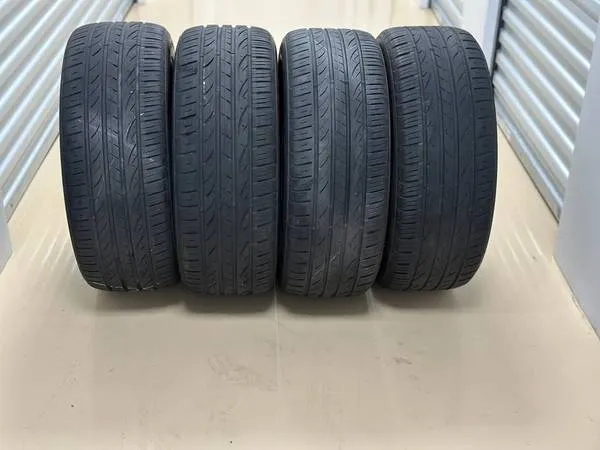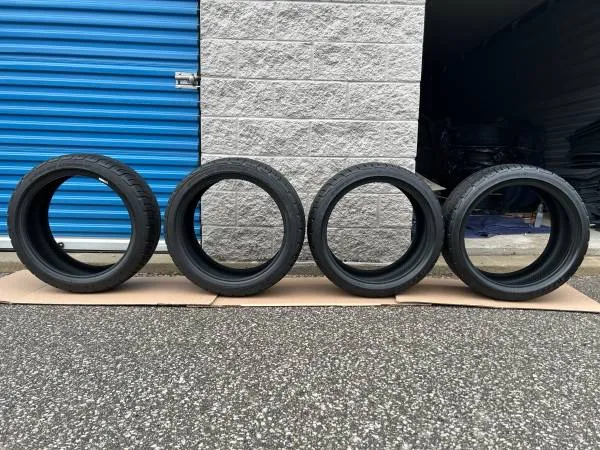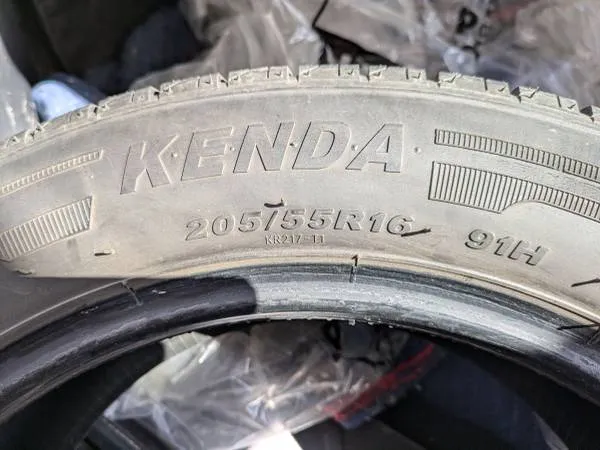Selling Used Tires: The Insider’s Guide
Got a set of perfectly good tires sitting in your garage because you upgraded to those fancy all-terrains? Or maybe you’re wondering if those takeoffs from your lease car are worth anything? Here’s something most folks don’t realize: there’s serious money to be made in the used tire game if you know where and how to sell them.
Selling to Local Businesses
The Local Tire Shop Connection
Let’s start with what might seem obvious but often gets overlooked: your local tire shops. Here’s a little industry secret – many shops actually prefer buying directly from individuals over wholesale sometimes. Why? Because they can inspect the tires in person and often get better deals. Just last month, I watched a shop owner pay $45 each for a set of barely-used Michelins that the owner was replacing just because they wanted a different brand.
Pro tip: Call ahead and ask for the owner or manager. Most shops have specific days when they do their buying, and showing up at the right time can mean the difference between a sale and a “come back later.”
Online Selling Strategies

The Digital Marketplace Gold Rush
Remember when selling stuff meant putting an ad in the newspaper? Those days are long gone, and the online tire market is booming. But here’s the thing – not all online platforms are created equal, and knowing where to list can double what you get for those tires.
Facebook Marketplace has become the go-to for quick local sales. What makes it work so well? People can check your profile, see you’re a real person, and message you instantly. Plus, buyers love seeing those time-stamped photos that prove the tires are actually in your possession.
Craigslist still holds its own, especially in bigger cities. The key here is standing out from the sea of dealers. Include the DOT numbers (those little dates stamped on the tire) in your listing – it shows you know what you’re talking about and helps serious buyers find you.
Commercial Opportunities
The Commercial Buyer’s Network
Here’s something most casual sellers never think about: commercial tire buyers. These folks supply used tire shops all over the country, and they’re always looking for good inventory. The catch? They usually want multiple sets at once.
If you’re cleaning out a shop or have access to multiple sets, these buyers might be your ticket to the best prices. They typically pay $20-35 per tire for good rubber, and they’ll often pick up everything at once. No hassling with individual buyers or tire-by-tire negotiations.
The Retreader Connection
Ever wonder what happens to all those truck tires you see on the highway? Many get retreaded, and these retreading operations are always on the lookout for good “cores” (that’s industry speak for used tires that can be retreaded).
While they mainly deal in commercial truck tires, some retreaders also handle light truck tires, especially popular sizes like 16.5″ and 17.5″. If you’ve got these sizes, calling a local retreader might net you better money than the usual retail channels.
Maximizing Your Profits

Specialty Markets: Where the Real Money Is
Here’s where things get interesting: specialty tires can command premium prices if you find the right buyer. Got some oversized mud terrains? Performance car rubber? These aren’t just tires – they’re gold to the right person.
Take winter tires, for example. A set of used Blizzaks with 70% tread might fetch $200-300 in Minnesota, while they’d barely sell for $100 in Florida. Timing and location matter hugely in the specialty market.
The Recycling Route: When Selling Isn’t an Option
Let’s be real – not every tire is sellable. But that doesn’t mean you’re stuck with them. Recycling centers might not make you rich, but many will pay $1-3 per tire, and you’re doing the environment a favor. Some even offer pickup services for larger quantities.
Preparation and Presentation
Making Your Tires Sell-Worthy
Before you list those tires, here’s what the pros check:
- Tread depth across all areas (not just the deepest spot)
- Manufacture date (those DOT numbers tell the story)
- Any repairs or patches (be upfront about these)
- Signs of dry rot or weather checking
- Even wear patterns
A clean tire is a sellable tire. Spend 15 minutes with soap and water making those sidewalls shine. Good pictures sell tires, and dirty rubber screams “neglect” to potential buyers.
Pricing Strategy: The Smart Seller’s Approach
Here’s a formula that works: Check new prices for your tire model, then factor in tread depth. Got 70% tread left? Start at about 40% of the new price. Why not 70%? Because used is used, no matter how good the condition.
But don’t just set it and forget it. If you’re not getting bites after a week, drop the price by 10%. The used tire market moves fast, and pricing too high for too long means missing out on potential buyers.
Documentation and Timing

The Documentation Game
Smart sellers keep records. What kind of records? Everything from:
- Original purchase receipts (if you have them)
- Tread depth measurements
- Photos of DOT numbers
- Any service history
- Removal reason
This stuff matters because serious buyers ask questions. Having answers ready makes you look professional and helps justify your asking price.
Seasonal Timing: When to Sell What
Just like buying, selling tires has its seasons. Here’s the rhythm smart sellers follow:
- Spring: List those winter tires
- Late Summer: Perfect for all-seasons
- Early Fall: Winter tire buyers start looking
- Year-round: Performance and specialty tires
Know the Rules: Legal Requirements and Safety
State Regulations Matter
Here’s something many sellers don’t realize until it’s too late: different states have different rules about selling used tires. In New York, for instance, tires need at least 2/32″ of tread depth to be legally sold. California requires sellers to be licensed if they’re moving more than a certain number of tires per year.
The smart move? Check your state’s Department of Transportation website before listing those tires. Better yet, call your local tire shop and ask about regulations – most are happy to share what they know about local requirements.
Safety First: Avoiding Liability
Let’s talk about something that keeps professional tire sellers up at night: liability. Sure, that tire might look fine at first glance, but what if there’s internal damage you can’t see? Here’s how to protect yourself:
- Always provide a basic bill of sale
- Note any defects or repairs in writing
- Take pictures of the tires before the sale
- Keep records of all inspections you perform
The Green Side of Tire Sales
Environmental Impact
Think selling used tires is just about making money? Think again. Every tire you keep out of the landfill makes a difference. Some eye-opening facts:
- A single tire takes up to 80 years to decompose
- Properly resold tires save about 10 gallons of oil per tire that would’ve been used in new tire production
- Recycled tires can become playground surfaces, road materials, and even fashion products
Responsible Selling
Being environmentally conscious isn’t just good for the planet – it’s good for business. Many buyers specifically look for sellers who understand proper tire disposal and recycling. If you can’t sell a tire, make sure it ends up at a certified recycling center. Some areas even offer incentives for proper tire disposal.
Common Pitfalls and How to Avoid Them

Watch Out for These Red Flags
Been in the tire game long enough, and you’ll see all kinds of sketchy situations. Here’s what to watch for:
- Buyers wanting to pay with checks for large amounts over your asking price
- Requests to ship internationally with “special shipping agents”
- People claiming the tires were defective weeks after purchase
- Lowballers who claim to be tire shop owners
Protect Yourself from Scams
Smart sellers stay safe by:
- Meeting in well-lit, public places (tire shops are perfect)
- Getting cash or using secure payment methods like Venmo or Cash App
- Taking detailed photos before any sale
- Writing up basic receipts for every transaction
Shipping and Final Considerations
The Shipping Question
Should you offer shipping? It’s a tricky one. Tires are heavy, and shipping costs can eat into profits fast. If you do ship, here’s the formula: Actual shipping cost + $10 for packaging and handling + insurance. Don’t guess – weigh the tire and get real quotes.
The Bottom Line
Selling used tires isn’t just about making a quick buck – it’s about matching good rubber with people who need it. Whether you’re clearing out your garage or running a small business, understanding these channels and strategies can help you get top dollar for your tires while helping others save money.
Got more questions about selling those tires? Drop a comment below. We’re always happy to share more insights about turning old rubber into ready cash.
Disclaimer: This content was partially produced with the help of AI tools and was reviewed and published by Jamil A.

